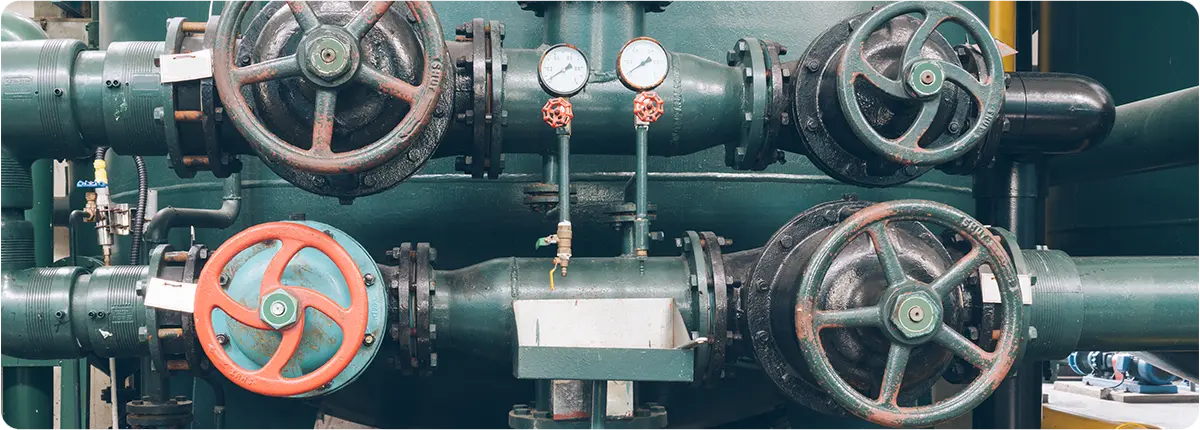Natural gas is transported through transmission pipelines at high pressures, typically between 40–70 bar, before it reaches city networks and industrial facilities. To ensure safe and efficient delivery, the pressure must be reduced and controlled. This is the responsibility of Pressure Reduction Stations (PRS), which play a vital role in natural gas infrastructure.
In recent decades, PRS operations have increasingly relied on automation technologies and advanced safety systems, ensuring reliability, efficiency, and protection for both people and the environment.

THE ROLE OF AUTOMATION SYSTEMS
SCADA Integration
- SCADA (Supervisory Control and Data Acquisition) platforms monitor key parameters such as pressure, flow, and temperature in real time.
- Operators can remotely open and close valves, adjust regulator settings, and respond instantly to emergencies.
Sensors and Measurement Technologies
- Pressure sensors: Detect sudden downstream fluctuations.
- Flow meters: Measure consumption and assist in leak detection.
- Temperature sensors: Track thermodynamic properties of gas.
Automated Valve Control
- Critical PRS facilities employ pneumatically actuated ball valves for rapid response.
- In emergencies, these valves close automatically, triggered by SCADA commands or sensor signals, ensuring fast isolation of the pipeline.
SAFETY SYSTEMS
Pressure Safety Valves (PSVs)
- Protect against unexpected overpressure conditions.
- Designed in accordance with API 520/521 standards.
Dual Regulation + By-Pass Design
- If one regulator fails, the secondary regulator maintains supply.
- By-pass valves ensure continuous flow during maintenance operations.
Gas Leak Detectors
- Detect even minor leaks within the station.
- Integrated into SCADA systems for early warnings and rapid intervention.
Fire and Explosion Sensors
- Flame and heat detectors enhance safety monitoring.
- In high-risk events, automatic fire suppression systems are activated.
ENGINEERING CALCULATIONS
Pressure Drop Calculation
ΔP = Pin − Pout
- Pin: Inlet pressure (bar)
- Pout: Outlet pressure (bar)
Example: If inlet pressure is 70 bar and outlet pressure is reduced to 19 bar:
ΔP = 70 − 19 = 51 bar
PSV Set Pressure
Safety valve set pressures are typically 110–120% of outlet pressure.
- For 19 bar outlet pressure, PSV set pressure ≈ 21–22 bar.
SCADA Trend Analysis
- Collected sensor data is displayed as trend graphs.
- These graphs help verify regulator stability and detect anomalies in real time.
REAL-WORLD APPLICATIONS
- Turkey (BOTAŞ City Gate Stations): Equipped with dual regulators, safety valves, and SCADA-based automation as a standard.
- Germany (Ruhr Region): Uses redundant regulator systems with by-pass valves for 100% backup reliability.
- Japan: Seismic sensors are integrated into PRS to automatically shut down gas flow during earthquakes.
CONCLUSION
Automation and safety systems in natural gas pressure reduction stations are no longer optional—they are a necessity. With SCADA integration, advanced sensors, safety valves, and intelligent control systems, PRS facilities achieve:
- Higher operational efficiency
- Rapid response to emergencies
- Enhanced protection of people and the environment
Looking ahead, predictive maintenance powered by artificial intelligence and smarter sensor technologies will further improve the safety and reliability of natural gas infrastructure worldwide.